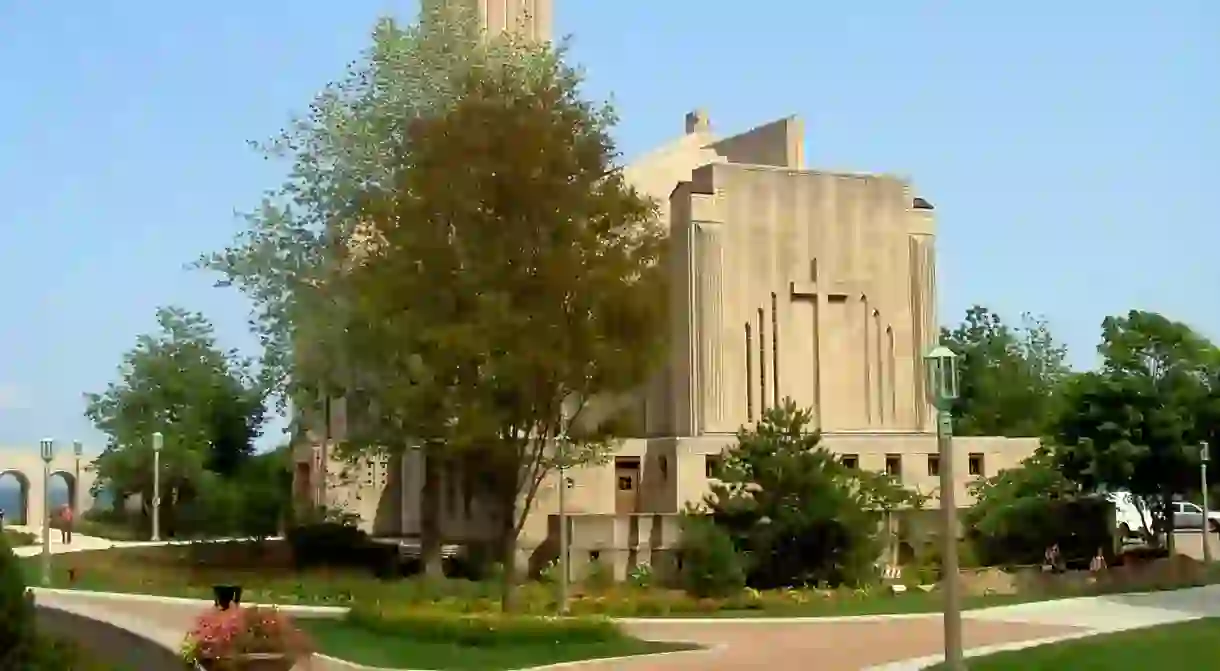A Brief History Of Loyola University Chicago

Loyola University Chicago has been well known for a number of different things throughout its history. Some recognize it as the starting point for famous alumnus and comedic actor Bob Newhart, while others still praise it for being the only college in Illinois to win a NCAA basketball championship title in 1963. It’s also gained attention recently for the men’s volleyball team and their back-to-back NCAA titles in 2014 and 2015. Not to mention that a former member of that team just won a bronze medal at the 2016 Rio Olympic Games with the USA national team.
Though it’s now a thriving institution of higher education for more than 16,000 students, Loyola University Chicago had humble beginnings. It was founded in 1870 by Jesuits as St. Ignatius College, where present-day St. Ignatius College Prep is located. It became Loyola in 1909 and moved to its current location alongside Lake Michigan in the Rogers Park neighborhood in 1912.
Today, the Lakeshore Campus serves as the main flagship for the school, though it owns and operates five additional campuses in Chicago and internationally: Water Tower Campus in Chicago’s Near North Side neighborhood; Health Sciences Campus in Maywood, IL; Retreat Ecology Campus in Woodstock, IL; Cuneo Mansion & Gardens in Vernon Hills, IL; and John Felice Rome Center in Italy.

Lakeshore Campus has evolved and grown extensively in the last century. Many of the older buildings were acquired by Loyola after previously being mere affiliates. For example, Dumbach Hall was built in 1908 and is the oldest building currently on campus, but it did not become a part of it until 1957. Up to then, Loyola Academy operated its high school out of Dumbach before it later moved to suburban Wilmette.
Mundelein Center is now the biggest and most populated class building on campus and was built in 1930, but for most of its life, it was Mundelein College. It was a private, Catholic, independent women’s college founded by the Sisters of Charity of the Blessed Virgin Mary (BVM). Loyola purchased the building in 1991 and has since fully incorporated it into the main campus.

But in the last 20 years, Loyola’s buildings have taken a different turn. The school has become a leader in nationally recognized sustainability practices following the construction of three LEED Silver certified and four LEED Gold certified buildings. Lakeshore Campus was ranked as the fourth greenest college in America by the Sierra Club in 2014 thanks to the new Institute of Environmental Sustainability building that houses aquaponics facilities, a geothermal facility, and extensive environmental research labs.
Another reason to love Loyola comes in the form of five-foot-tall Sister Jean Dolores Schmidt, BVM. She’s been at the school for more than 50 years and has served as the chaplain to the men’s basketball team since 1994. Sister Jean is a beloved figure on campus and acts as a grandmotherly figure to students and faculty alike.

Her office in the new Damen Student Center gives her the opportunity to interact with the Loyola community every day, and she can be seen riding around campus in a golf cart, handing out prayer cards during finals week and at every home basketball game. At the 2016 commencement ceremonies, Loyola awarded Sister Jean an honorary doctorate for her services to the school.













